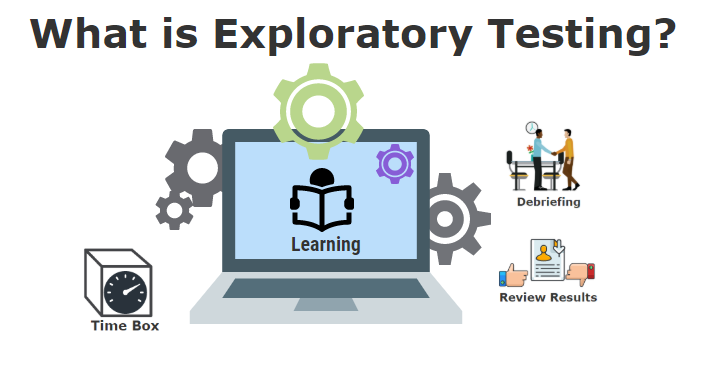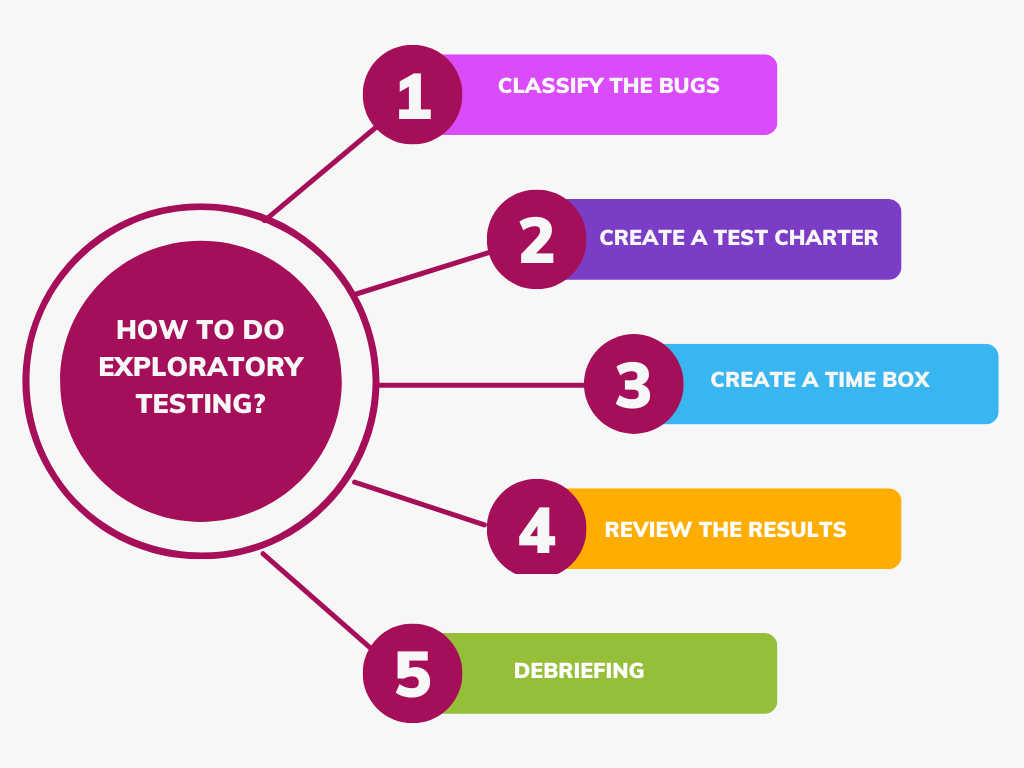
Exploratory testing is a software testing approach often characterized as simultaneous learning, test design, and execution. It centers on the process of discovery and depends on the tester’s guidance to uncover defects that may not be readily addressed by other testing methods.
What is Exploratory Testing?

“Exploratory testing” is the practice of testers entering a product to identify bugs and errors without relying on predefined scripts or test cases. It promotes creative thinking and the simulation of real-world usage, mimicking end users’ actions. In the context of Global App Testing, testers are motivated to discover bugs that the QA team deems of high or critical priority.
Exploratory testing enhances the overall robustness of the QA portfolio by uncovering edge cases that may not be covered by scripted tests, ultimately contributing to higher overall quality.
Why Exploratory Testing?
In scripted testing, you typically create test cases beforehand and then proceed with their execution. In contrast, exploratory testing involves both test design and test execution happening simultaneously.
The execution of scripted tests is often a routine task in which testers follow predefined test steps and compare actual results to expected results. This type of test execution can be automated and generally involves fewer cognitive skills.
How it works Exploratory Testing?

- Product learning: Specialized and B2B applications might necessitate some training before conducting an effective exploratory test. Global App Testing offers two approaches to address this need, which include educating testers to a minimum standard using the materials and framework acquired during their 100-day onboarding, and allowing testers to have a play period in the app to become acquainted with the product. Typically, both approaches are employed.
- Outcome learning: Testers should be aware of the desired outcomes, whether it involves identifying flaws in early iterations or ensuring that resolved bugs do not reoccur. Global App Testing equips testers with the necessary materials and knowledge to minimize redundancy in their bug reporting.
- Execution: Testers have the freedom to execute tests as soon as they are created or requested. They scrutinize, investigate, and navigate the application or website, documenting and communicating the findings using suitable methods. This methodology fosters an unencumbered pursuit of defects and provides benefits to both the product and the tester.
- Reiterate: Each cycle of exploratory testing yields fresh data for the incentivized testers as they classify and assess the severity of accepted or rejected bugs. This implies that as you continue to conduct exploratory tests, your proficiency in identifying software issues should improve.
What are the advantages of Exploratory Testing?
Exploratory testing is a flexible and adaptable testing approach in which testers simultaneously create, execute, and learn from their testing activities. It is commonly employed in agile development settings and offers numerous benefits:
- Flexibility: Exploratory testing is not restricted by pre-defined test cases, providing testers with the flexibility to adapt swiftly to changes in software requirements or the application itself. This adaptability is particularly advantageous in agile and fast-evolving development environments.
- Uncovering Unplanned Issues: Testers frequently uncover defects and problems that may remain unnoticed when relying solely on scripted test cases. They have the liberty to explore the application organically, replicating real-world user behavior and interactions.
- Improved Test Coverage: Exploratory testing often results in enhanced test coverage as it leverages the tester’s knowledge, intuition, and creativity. Testers can pinpoint edge cases and scenarios that might be overlooked by scripted test cases.
- Real User Perspective: Testers evaluate the software from an end-user perspective, offering valuable insights into usability, user experience, and potential user challenges. This perspective can contribute to enhancing the overall software quality.
- Rapid Feedback: Exploratory testing enables rapid feedback and early defect identification. Testers can commence testing as soon as a build is accessible, delivering immediate insights to developers regarding the software’s quality.
- Efficient Bug Detection: Testers can frequently identify defects more efficiently than adhering to scripted test cases, as they are not confined to predetermined test steps. They can rely on their intuition and inquisitiveness to reveal problems.
- Effective in Unstable Environments: In scenarios where the software undergoes frequent changes, exploratory testing can be more efficient than continuously maintaining and updating scripted test cases.
- Test Coverage Evolution: Test coverage expands as testers explore the software. They can redirect their attention to areas where defects are frequently detected or revisit sections that have posed issues previously.
- Encourages Creativity: Testers are encouraged to think creatively, which can lead to innovative test scenarios and a more profound comprehension of the software’s behavior.
- Efficient for One-Time or Ad Hoc Testing: When there is insufficient time to create scripted test cases, or when testing a one-off situation or a highly customized solution, exploratory testing can be the most practical choice.
- Training Tool: Exploratory testing can be a valuable training tool for new testers. It allows them to learn about the software and develop their testing skills by exploring the application and discovering defects.
- Identifying Risk Areas: Testers can swiftly pinpoint and concentrate on the most critical or high-risk areas of the application, guaranteeing comprehensive testing coverage for these areas.
While exploratory testing has numerous advantages, it does not serve as a substitute for scripted testing; instead, it complements it. Utilizing both approaches in combination can deliver extensive test coverage, guaranteeing a thorough evaluation of software quality and functionality.
Conclusion:
In the field of Software Engineering, exploratory testing is conducted to address the shortcomings of scripted testing. It contributes to enhancing the test case suite and focuses on learning and adaptability.
Digital Marketing Manager at Cotocus